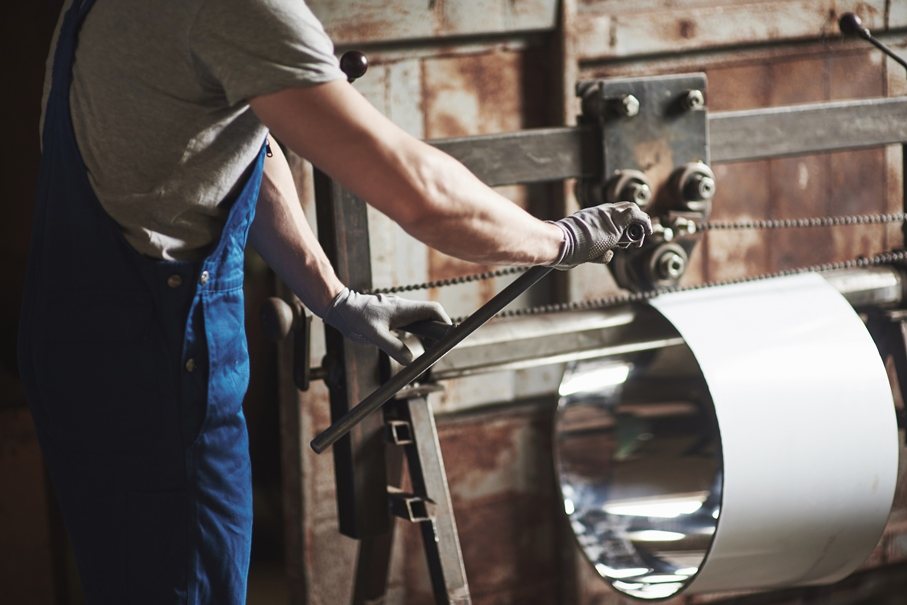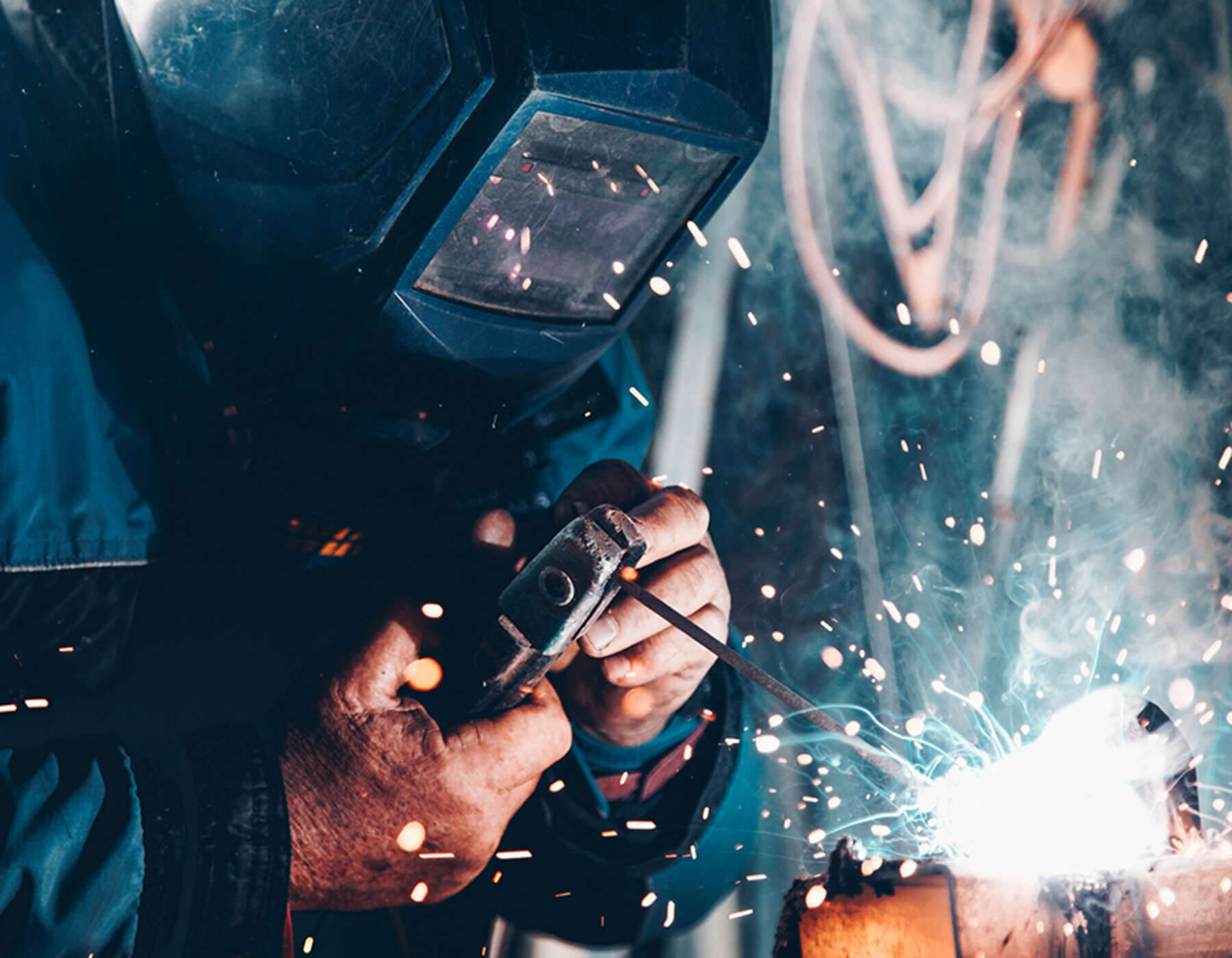
Metal rolling involves passing metal sheets/strips through one or more rolls to manipulate the sheet metal’s thickness and make the metal more uniform.
Metal rolling is one of the most economical fabrication processes for the mass production of a lot of industrial components, with most metals being subject to metal rolling at some point during the fabrication process.
There are two main types of rolling, cold and hot rolling, which we’ll explore in more detail below, along with some of the advantages and disadvantages of sheet rolling.
What is metal rolling?
Metal rolling is a unique metal forming process where sheet metal is worked through a series of tools, equipment, and machinery to achieve a uniform and set specified shape.
The material is shaped by feeding metal through two compressive forces and constantly spinning rolls, with rolling continuing until you reach the desired shape.
The shape and thickness of the material will depend on the functionality, straightness, and how robust/sturdy the metal is.
The aim of rolling is to create uniformity, reduce the thickness of the material, and, ultimately, affect its overall structure.
Note: You will need to be aware of and control the amount of friction between the rolls; to help with this, you can use lubricants.
If metal rolling isn’t for your project, check out our post on plasma cutting and the benefits this fabrication process offers when working with sheet metal.
Facts about metal rolling
Metal fabricators will use a series of rolling mills to achieve the perfect precision sheet. This means you will also find a range of metal rolling processes, such as:
- Ring rolling – materials are fed through two rotating rolls to hot stretch the metal.
- Roll bending – creating curved shapes through rolling.
- Roll forming – metal strips are continuously fed through the rollers (this is a cold rolling process).
- Profile rolling – suitable for a range of materials that require a curve.
- Controlled rolling – a great fabrication process to improve and take advantage of the benefits of steel.
All of these processes are efficient and precision fabrication processes.
Materials that can be rolled include:
- Carbon and mild steel
- Stainless steel
- Galvanised steel
- Aluminium
- Copper
- Brass
- Bronze
It’s important when choosing your material to choose one suitable for the intended end purpose. A material where you can maximise the benefits. Benefits such as strength, wear resistance, and rigidity, among others.
You must also be aware of potential material defects, such as impurities in the sheet metal that may cause it to rust prematurely, ingrain dirt into the sheet metal, and expand, affecting dimensions.
Process of metal rolling
Metal rolling involves two processes:
Hot rolling – in this instance, the metal of choice is heated to over 1000 degrees Fahrenheit in order to prevent the metal from recrystalisation. This means that there are only certain types of metals suitable for this process, and they are the ones that have slight directionality in their mechanical properties as well as deformation-induced stresses.
As sheet metal fabricators UK, we use the hot rolling process to support projects such as the manufacture of rail tracks, water heaters, truck frames, agricultural equipment, building works in construction, and more.
Cold rolling – here, we roll materials at room temperature, placing them below their recrystallisation point. Cold rolling helps increase the metal’s strength by 20% through strain hardening.
Metals that we use in cold rolling also tend to have tighter tolerances and a better surface finish.
When carrying out metal rolling, you must consider the order in which the bend should happen, what needs to be under and over-bent, if there is a requirement for punching, etc.
Specific fabrication finishes can also be achieved on the rolled piece of sheet metal to achieve the ideal and specified finished product. Finishes can include powder coating, polishing, and more.
Speak to a member of the Morfab team to learn more about our full range of fabrication services.
Advantages of metal rolling
- Metal rolling is a good option if you have high volumes to manufacture, making it incredibly cost-effective.
- Certain rolling techniques can produce bends, holes, notches, labels, stamping, and even embossing.
- You’re able to create new metal forms and the desired material properties.
- You can increase the strength of the material being rolled through grain orientation and spread.
- You can achieve varying metal thicknesses suitable for varying projects.
- You create material uniformity.
Some slight disadvantages to metal rolling include edge cracks, centre cracks, and wavy edges.
This makes it essential to work with a professional sheet metal fabricator. A team with experience and knowledge in metal rolling who can provide you with precision fabrication that results in high-quality outcomes and products.
Sheet metal fabrication
Our team can support you with all metal rolling requirements to support you with the manufacture of various products and project specifications.
We can manufacture both custom and standard sheet metal products, providing you with a range of sheet metal services to meet your specific requirements.
Call us on 0191 816 2718 or email your requirements to info@morfabrication.com and see how we can help.

